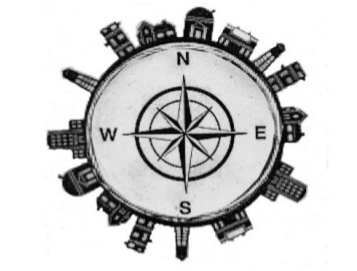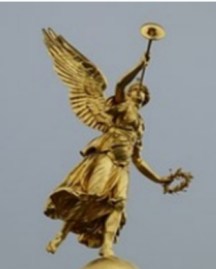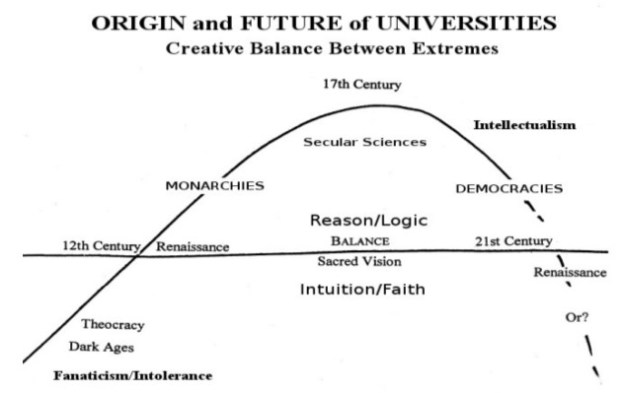The day after America’s momentous national election, as I watched replay video of Donald J. Trump’s acceptance speech, for the first time in months I felt a genuine hope for human survival. It may not be exactly the hope of which he speaks, or what others expect, be their motives for better or worse. But here, I’ll tell you what triggered this surge of hope in me.
I’ll also tell you why today, after eight months without posting a single blog, I feel a sense of urgency to spell out the opportunities and shadow dangers that move me to write again as predictable media backlash sets in.
My conclusion: Listen up America! Pay attention, people of the world! Regardless of what noisy, dark distractions his enemies throw at us, we dare not forfeit the reprieve we’ve been mercifully granted by failing to fully recognize, respect and hold fast to his message as a last hope for human survival.
For starters, I am focusing today on the message of the President-Elect’s victory speech, transcribed word for word. They are words of power because deeper than shallow politician-speech, they were spoken with utmost sincerity from the heart.
Surely he isn’t familiar with the Life Wheel and Einstein’s Unified Theory I’ve described over the past three years. Nor, for him, is it necessary. However, for the rest of us, this work might make a huge difference, perhaps even tipping the scales of history in favor of human survival. It shows exactly the ways in which he surpasses usual politicians, and what people worldwide have at stake in DJT’s success.
The Life Wheel validates Donald J. Trump as an authentic leader who lives true to his inner North Star. Though others may mouth similar words, rare indeed are those with the genuine inward authority to speak them. (Can you imagine expressions of LOVE for the American people coming credibly from the mouths of the politicians who opposed him?)
What I heard that day was a voice that speaks true to the basics of the humanity’s enduring wisdom traditions. Granted, he is a highly intelligent leader who deliberately surrounds himself with the best talent he can find. But significantly, he is also a “natural” – one who radiates the vitality and confidence to live true to himself, one who trusts his natural gut instincts.
Deeper than mere philosophy, DJT projects the presence of someone instinctively attuned to our common Source. His call for Unity in the spirit of humility and gratitude rings authentic and true to my ears.
His first words were inclusive.
It’s about US – OUR victory. Now it’s time for America to bind the wounds of division. To all Republicans and Democrats and Independents across this nation, I say it is time for us to come together as one united people. It’s time. I pledge to every citizen of this land that I will be president for all Americans. And this is so important to me.
He continued:
For those of you who have chosen not to support me in the past – of which there were a few people – I’m reaching out to you for your guidance and your help so that we can work together and unify our great country.
He added:
As I’ve said from the beginning, ours was not a campaign but rather an incredible and great movement made up of millions of hard working men and women who love their country and want a better, brighter future for themselves and for their families. It’s a movement comprised of Americans from all races, backgrounds, religions and beliefs who want and expect our government to serve the people – and serve the people it will.
What I heard is the voice of a dedicated servant leader, in stark contrast to finger-pointing opponents who have boldly and corruptly violated the responsibilities of public office to enrich themselves and brainwash the public – notably gullible young people — with divisive political-speech.
He observed:
I’ve spent my entire life in business looking at the untapped potential in projects and in people all over the world. That is now what I want to do for our country. Tremendous potential.
Ah. Here is language that acknowledges the E = energy middle level of the Life Wheel, welcome to my ears. He is in touch where his opponents are not with inner levels of the Life Wheel. Energy potential, though invisible, is very real indeed. It is the generator of true wealth.
I’ve gotten to know our country so well. Tremendous potential. It’s going to be a beautiful thing. Every single American will have the opportunity to realize his or her fullest potential. The forgotten men and women of our country will be forgotten no longer.
This is the view of a world citizen, a voice of good-will, universal respect and self-actualization. It is neither new agey nor hocus pocos to those who understand the heart of enduring wisdom traditions.
He promised:
We will embark upon a project of national growth and renewal. I will harness the creative talents of our people and we will call upon the best and brightest to leverage their tremendous talent for the benefit of all. It’s going to happen.
Significantly, he concluded:
I want to tell the world community that while we will always put America’s interests first, we will deal fairly with everyone. With everyone. All people and all other nations. We will seek common ground, not hostility. Partnership, not conflict.
This got my heart-felt YES! Here at last is a voice of the genuine Common Sense called for in my work.
It accords with the compassionate, common sense vision I sought to express in creating this composite image of Einstein’s compass superimposed on the concentric circles of the Life Wheel, quickening the globe of Planet Earth from within. My common sense survival meme, if you will, speaks to humanity’s common origin, universal values and shared interests.

Perhaps deeper than the President-Elect consciously knows (or even needs to), his words ring true across the full continuum of the Life Wheel.
BUT: here is the danger whereof I spoke earlier. Many people, due to a host of unfortunate circumstances, live primarily on the shallow surface of the Life Wheel. They haven’t the depth to recognize or respect what, for whatever reason, they’ve forgotten. Worse, some, unintentionally or otherwise, live at odds with inner truth. They will continue to spin, distort and attempt to delegitimize DJT’s victory for the people of the world. They will definitely stir up unnecessary conflict to destabilize the world, as if to prevent his best intentions from coming True.
Prior to the election, thanks to the persistence and personal sacrifices of Julian Assange, people worldwide were exposed to the depths of government corruption, including treasonous influence pedaling, satanic pedophilia and – Einstein’s worst nightmare – unconscionable provocation of nuclear war.
Thanks to valiant reporters operating outside the globalist corporate-dominated media, voters in this election were given the opportunity to see through the double-speak – recognizing the stark choice they were being offered, literally between good and evil.
For there is an archetypal, ancient war going on, not between nations, but far deeper, between those within every nation who affirm LIFE and those who destroy it.
Like every other value word in the English language, evil has been abused, confused, and ladened with nonsense spin. But the point I’m making here is based on science elsewhere explained at length.
For example, in How Bad People Become Leaders, I showed how the Life Wheel is fragmented into a functional picture of evil:

As explained, in this picture of evil, the concentric levels representing body, energy/emotions, mind and spirit operate out of synch, each disassociated from the others. The smallest circle which represents Conscience floats outside, detached from daily experience.
In this context, Trump’s clarion call to restore Unity to the United States is given depth and urgency. Agents of evil will predictably do their utmost to undermine all he seeks to accomplish. We must steadfastly refuse to be fooled or intimidated, choosing to stay the creative course of growth and renewal. The forces of destiny at work today are infinitely greater than any human individual. It is vitally important to see the results of the election from this larger perspective and to support America’s President Elect, mindful of all that is at stake.

God speed you in your chosen role as a messenger of unity and hope, Donald J. Trump. May God and his good angels protect, guide and bless you in all things, always.









